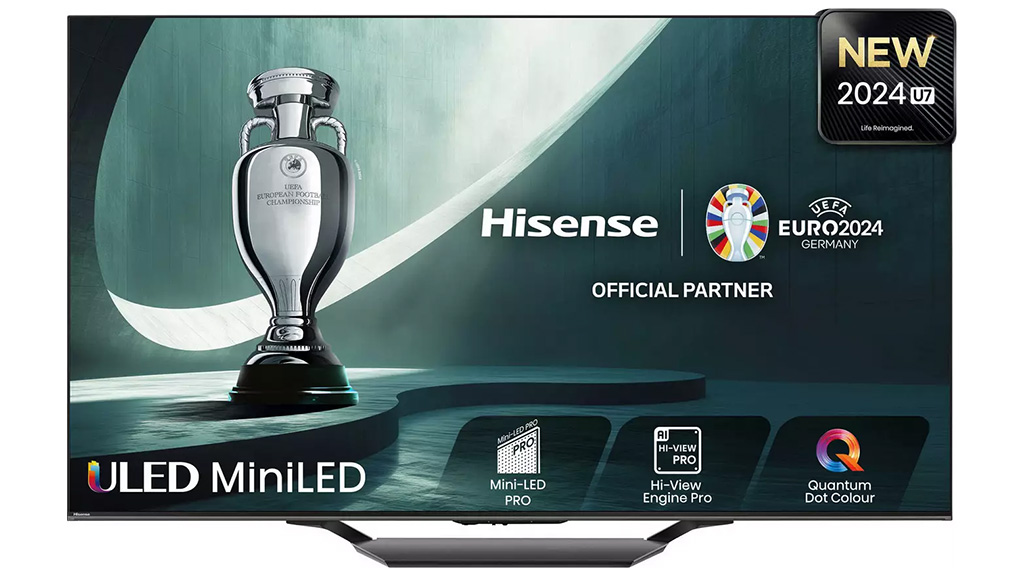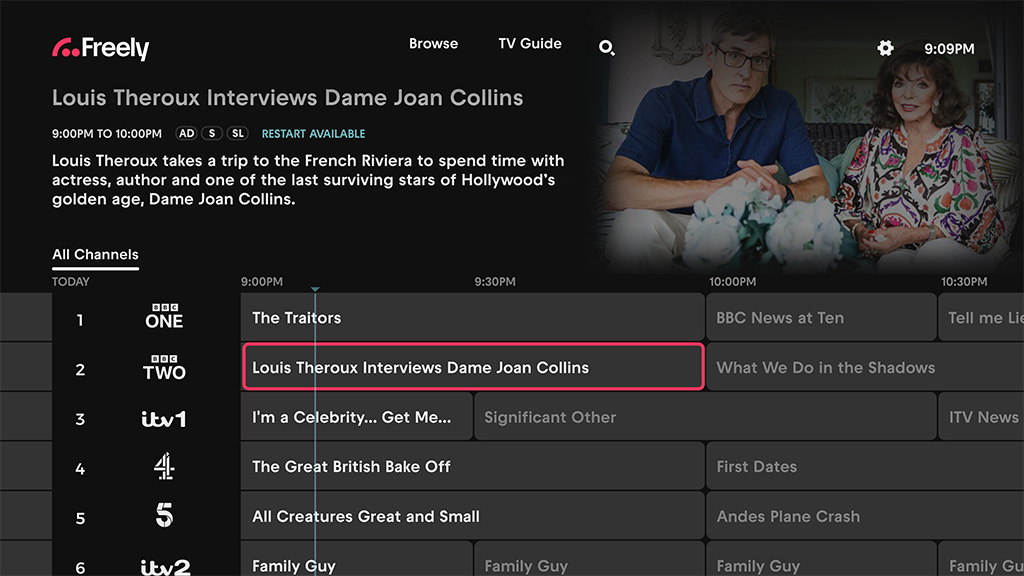The new Freely service from Everyone TV in the United Kingdom has received a mixed reception following its launch. There are only a couple of Hisense televisions that support it available so far and they are far from inexpensive. Nevertheless, informitv has been testing Freely as a user to see how it rates.
The cheapest Freely product currently available is a £1,300 55” 4K Hisense television, which makes it an expensive option for anyone in the market for free television. The price will come down over time as more models become available, but it is currently a premium proposition, contrary to the positioning of Freely. Given that you can get the previous model of a 55” 4K Hisense television for under £300, it does not look like a great buy.

Anyone purchasing a Freely television right now will find that the only online channels currently available through Freely are those of its public service broadcaster shareholders, the BBC, ITV, Channel 4, and Channel 5, plus STV, UTV, and S4C in Scotland, Northern Ireland, and Wales. There are just over 30 channels in all. The lineup does not even include the UKTV commercial channels that are wholly owned by the BBC.
Otherwise, consumers will need to connect an antenna, which means they might as well have Freeview. That might change in the future, as Freely promises to become bigger and better and bring more channels on board. In the meantime, as a hybrid option Freely offers little over a Freeview play product.
Installing a Freely television is simple, as it only needs a mains cable and a WiFi connection. That is a refreshing change from the tangle of cables and connections normally needed, or the need to be near an antenna point. And that really is the point of Freely. It frees you from being connected to an aerial input.
On first set up it is necessary select a country and enter a postcode then accept various privacy policies. Freely is delivered as an HbbTV operator application, which means that it becomes the default viewing experience for the television. Without an aerial connection, there is no need to scan or tune channels, which are delivered online.
The set comes up straight into BBC One, which is interestingly a minute behind the broadcast transmission, although there is no technical need for that. Channel changes are a little slower than for terrestrial transmissions but otherwise the experience is comparable. In terms of picture quality, it is pretty poor on such a large screen, no worse than digital terrestrial transmissions, but nothing like what a 4K screen is capable of delivering.
The Freely interface is accessible through a dedicated button on the remote control, which sits alongside buttons for YouTube, Amazon Prime Video, Netflix, Disney+ and the VIDAA channels from Hisense. That makes Freely appear as a peer to those services.
When in Freely, channels can be accessed directly through the number buttons, or through a channel list or guide view, which seem to do the same thing. There is a browse view, which provides editorial recommendations for programmes of the participating broadcasters.

There is a button for the home screen, which can be set as the default view when the television is turned on. From here there is a rail of applications, with online apps of the public service broadcasters prominently positioned, after Netflix, with Freely appearing as the eleventh app, after YouTube, NOW, Disney+, and Amazon Prime Video, but before Apple TV+ and a long list of other apps. So essentially, Freely is an app like any other, but with direct access to live television channels. Effectively, it functions like a virtual HDMI input to the television, taking over some of its features.
A basic Freely programme guide is provided, but there is no ability to go ‘backwards’ in time. Programmes can be paused and resumed, but despite the appearances of on-screen buttons, there is no way to rewind or catch up to real time, or if there is it is not obvious.
There is a ‘restart’ option for some programmes, but this works by deep linking to the online app of the relevant broadcaster, like the BBC iPlayer. That means the user must first sign-in to each of the broadcaster apps separately to set them up. BBC Radio services are available, but only through the BBC Sounds app.
There appears to be no way to record programmes, although the television can support this with an attached storage device. This has been a legitimate feature of television since the days of the videocassette recorder and continues to be popular, although broadcasters would rather people use their online catch-up services. For commercial broadcasters that is all about targeting adverts to users and preventing people from skipping them.
Given that the public service broadcasters are the sole shareholders in Freely, it feels no more integrated than on any other competing platforms. This was an opportunity for Everyone TV to bring its broadcasters together with a joined-up proposition, but it seems that they are still intent on promoting their own separate online services.
Usability is important because Freely feels no easier to use than other connected television offerings, which may be smart in that they are far from simple. For many people, including those that most value television and are its biggest viewers, it is far more complicated than it needs to be.
So far, the only announced manufacturers supporting Freely are Hisense and Vestel. Xperi will be supporting Freely on televisions powered by its TiVo operating system, initially on products produced by Vestel.
Unless or until Freely is available on products from a wider range of manufacturers and all price points, including those from the market leaders Samsung and LG, it risks being just an addition to the range of platforms available in an increasingly fragmented market, more like another YouView than a long-term replacement for Freesat and Freeview. Anyone that is used to Sky will probably find it lacking.
Overall, it seems that Freely has been rushed out to meet a self-imposed deadline, with many features still missing. It is a software product, so can be continuously upgraded, so some of the limitations may be addressed in time.
In the longer term, it seems inevitable that online television will become the norm, but in a competitive market Freely is not the only option.
